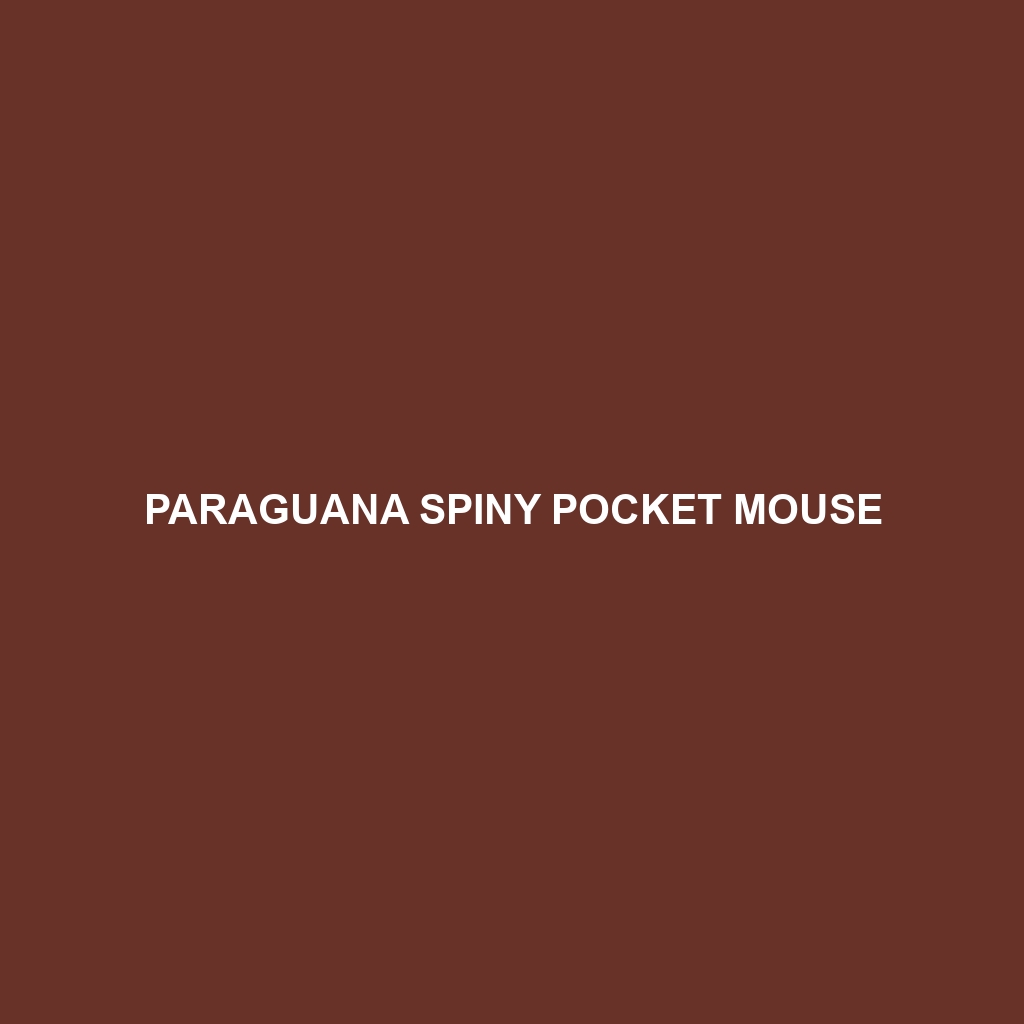Jaliscan Spiny Pocket Mouse
Common Name: Jaliscan Spiny Pocket Mouse
Scientific Name: Chaetodipus spinatus
Habitat
The Jaliscan Spiny Pocket Mouse is primarily found in the arid regions of western Mexico, specifically in the states of Jalisco and Colima. This small rodent thrives in scrub and semi-desert environments, typically favoring rocky slopes, open fields, and areas with sparse vegetation. The presence of sandy soil and dry conditions are crucial for its habitat as they provide ample burrowing opportunities.
Physical Characteristics
This species is characterized by its small size, measuring about 10 to 12 cm in body length, with an additional tail length that can exceed the body size. The coat is a mix of gray and brown hues, featuring coarse, spiny fur which offers camouflage among the rocks and soil. Prominent characteristics include large eyes, long whiskers, and distinctive, fur-lined cheek pouches used for storing food.
Behavior
Jaliscan Spiny Pocket Mice are primarily nocturnal, emerging at dusk to forage for food. These rodents are known for their burrowing behavior, creating extensive tunnel systems for shelter and protection from predators. They communicate using a variety of vocalizations and scents, marking their territory with secretions. Their agility and speed make them adept at evading threats in their natural habitat.
Diet
The diet of the Jaliscan Spiny Pocket Mouse consists mainly of seeds, grains, and fruits, which they forage from the ground. They exhibit the behavior of hoarding food in their cheek pouches to transport it back to their burrows. This rodent is particularly adept at locating nutrient-rich seeds, making it an important participant in seed dispersal within its ecosystem.
Reproduction
Jaliscan Spiny Pocket Mice breed during the warm months, typically between April and September. After a gestation period of approximately 24 days, the female gives birth to a litter of 2 to 5 offspring. The young are altricial, meaning they are born hairless and with eyes closed, requiring maternal care for several weeks before they are weaned and become independent. Parental care is crucial during these early stages, allowing the offspring to develop essential survival skills.
Conservation Status
The Jaliscan Spiny Pocket Mouse is currently classified as vulnerable due to habitat loss and degradation caused by agricultural expansion and urban development. Conservation efforts are needed to protect their natural habitats and ensure the survival of this unique species.
Interesting Facts
An interesting fact about the Jaliscan Spiny Pocket Mouse is its ability to store food in its cheek pouches, enabling it to survive in environments where food sources can be scarce. Additionally, these mice possess a sophisticated sense of smell that aids them in locating food and detecting predators.
Role in Ecosystem
The Jaliscan Spiny Pocket Mouse plays a crucial role in its ecosystem by acting as both a seed disperser and a prey species for larger animals. Its foraging behavior helps to propagate plant species, thereby contributing to the biodiversity of its habitat. By serving as a food source for various predators, it is an integral part of the food web within its ecological community.
